Gia Lai Order one get two, that is two bowls of pho or also known as Gia Lai dry pho, the pride in the culinary culture of the people of the mountain town.
Gia Lai mountain town, in addition to specialties such as grilled chicken rice, jar wine, smoked chicken, and sun-dried beef, also has another pride: pho hai to or dry pho. This dish was recognized by the Asian Record Organization as "Asian culinary value" in 2012.
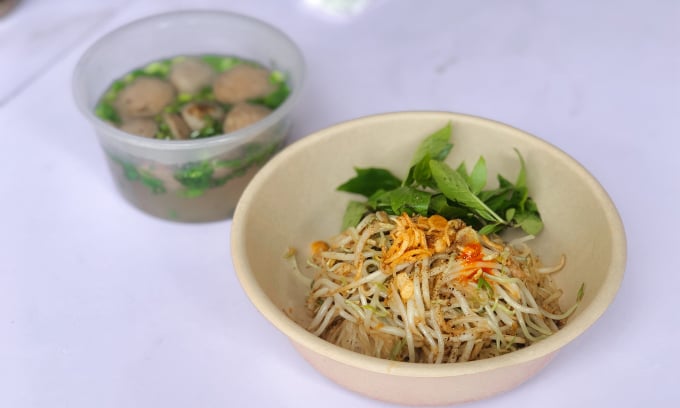
The name pho hai to comes from the way the pho and broth are served in two separate bowls. Photo: Quynh Mai
The origin of dry pho comes from the traditional dry pho noodle making profession in Gia Lai. The production facility at 42 Ba Trieu (Pleiku City) is considered the first dry pho noodle making factory in the mountain town, established by Mr. Hau Tac Cai (of Chinese origin) and his wife, Mrs. Hua Thi Thuy. Ba Trieu Street is also home to many of the oldest pho noodle making factories today, all of which belong to the descendants of the Hau family.
From dry pho noodles, Mr. Nguyen Thanh My created dry pho or pho hai to, according to Gia Lai province's electronic information portal. The exact time when dry pho was invented is unclear.
Gia Lai dried pho noodles are different from regular pho noodles. Dried pho noodles are made from rice in Phu Thien district (Gia Lai). The process of making dried pho noodles is similar to making fresh pho noodles, but the pho noodles are not cut into noodles immediately but need to be dried before being put into the cutting machine.
Dried pho noodles are about 3 or 4 times smaller than Hanoi pho noodles, and can easily be confused with Ho Chi Minh City noodles. The noodles are thin, flat, and hard because most of the water has been removed during the drying process, but when blanched in hot water, they become soft and chewy.
Cooked pho noodles are put into a bowl, add pork fat, fried onions, green onions, seasoned minced pork and stir-fry (with beef pho) or shredded chicken (with chicken pho). In addition to herbs such as bean sprouts, basil, lettuce, coriander, dry pho cannot lack a typical spice, creating the "soul of the dish", which is Gia Lai black bean sauce. This is a spice made from fermented soybeans, black in color and smooth, salty with a little sweetness of soybeans and a special aroma.
As the name suggests, when ordering a portion of pho, diners will be served two bowls at the same time, one containing pho noodles, one containing broth. Dried beef pho uses broth from pork and beef bones, dried chicken pho uses broth from pork and chicken bones.
Do not use spices such as cinnamon, star anise, cardamom, dry pho broth only uses bone broth, add minced beef, shape into balls. Dry pho broth has a light, slightly sweet taste, little spices, so when enjoyed alone it may be a bit bland compared to some people's taste.
At first glance, pho hai to looks similar to northern vermicelli noodles. The difference is that the pho noodles are ivory white and do not turn transparent after cooking like vermicelli noodles.
Before enjoying dry pho, diners add herbs and drizzle black soy sauce into the bowl of pho. The noodles are chewy, smooth, sweet, and the fresh vegetables, after being mixed well, have absorbed the salty taste of black soy sauce. After tasting the flavors created from many spices, a spoonful of light, sweet broth will help balance the taste buds, avoiding the feeling of being too salty or full when eating continuously.
During the Hanoi Autumn Festival 2023 taking place from September 29 to October 1 at the Hanoi Children's Palace, the Gia Lai dry pho stall of Ms. Luong Vu Thao Nguyen, owner of a dry pho restaurant in Pleiku City, attracted many diners to enjoy. "When cleaning up, most diners finished all the pho, not leaving much leftover. Some people bought more after eating to take home, some people bought packaged dry pho noodles and black bean sauce to make their own at home," Ms. Nguyen shared.
Ms. Huynh Thi Phuong (37 years old) was born in Gia Lai, moved to Hanoi about 15 years ago. Having enjoyed both dry pho in her hometown and Hanoi pho, she said that Gia Lai dry pho noodles are small, chewy and hard, not soft, smooth and moist like Hanoi pho noodles. Ms. Phuong herself likes dry pho better and can enjoy it every day. Although Hanoi pho is delicious, because it uses a lot of spices and the broth has a stronger smell, she eats it less often, about 2-3 times a week.
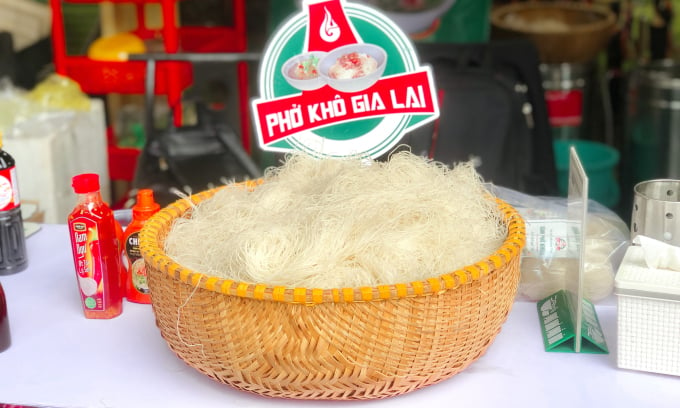
The Pho Hai To brand has been registered for trademark protection by Gia Lai province. Photo: Quynh Mai
In 2021, Gia Lai dry pho is one of four Vietnamese specialties along with Nghe An eel vermicelli, Hue beef noodle soup and Quang noodles selected by the Ministry of Information and Communications to be printed on the "Vietnamese Cuisine" stamp set. The stamp set is available on the postal network of Vietnam Post Corporation from December 25, 2021 to June 30, 2023, according to the Gia Lai Tourism Promotion Information website.
In 2022, Ms. Nguyen brought two bowls of pho to participate in the contest "Finding people who cook delicious pho" organized by the Vietnam Culinary Culture Association (VCCA) and a number of other organizations and won the Creative Star Anise award.
Also in 2022, Gia Lai province registered for trademark protection for Gia Lai dry pho. Ms. Nguyen's pho restaurant located at 10 Nguyen Tat Thanh Street, Pleiku City is one of the few businesses licensed by the Department of Science and Technology of Gia Lai Province to use the Gia Lai dry pho brand certification trademark. Ms. Nguyen's restaurant located at 10 Nguyen Tat Thanh (Pleiku City), currently sells a medium bowl of Gia Lai dry pho for 35,000 VND, a large bowl for 40,000 VND and a special bowl for 50,000 VND.
Although recognized as a Vietnamese specialty, the reputation of dry pho has not yet spread beyond the local area. Ms. Nguyen hopes that in the future there will be tours combining cuisine to promote the value and flavor of dry pho nationwide and the world.
Quynh Mai
Source link



![[Photo] Prime Minister Pham Minh Chinh receives Lao Minister of Labor and Welfare Phosay Sayasone](https://vphoto.vietnam.vn/thumb/1200x675/vietnam/resource/IMAGE/2025/11/11/1762872028311_dsc-2246-jpg.webp)
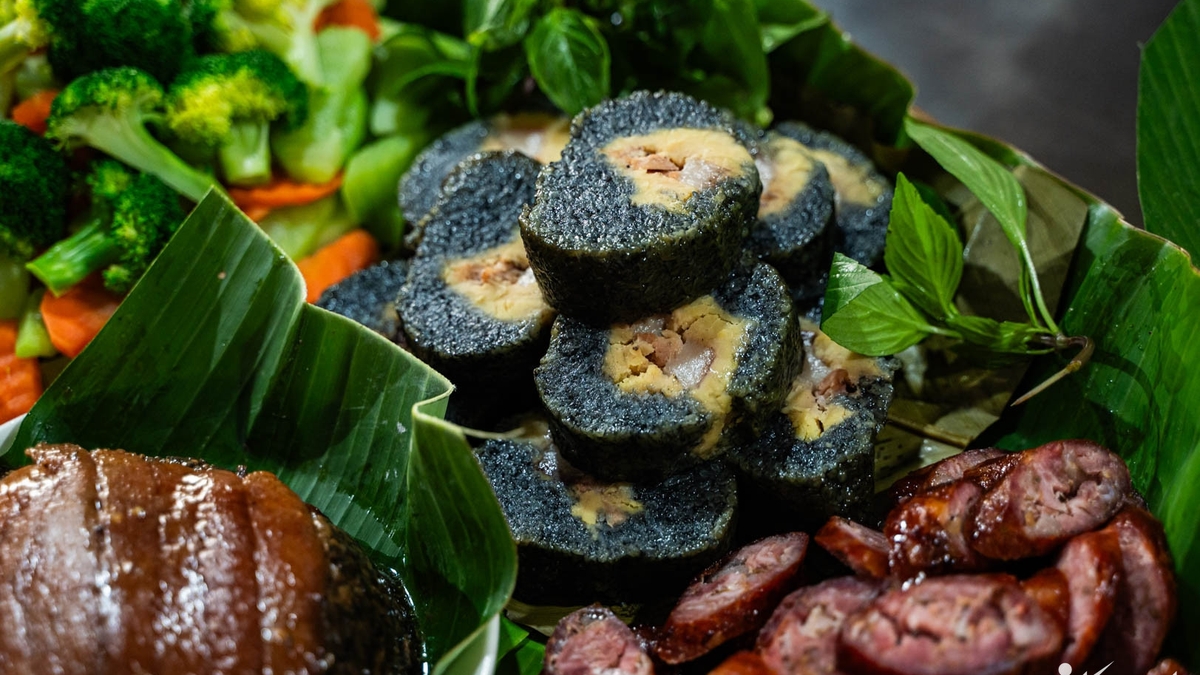





























































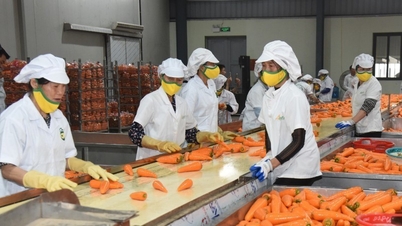







































![Dong Nai OCOP transition: [Article 3] Linking tourism with OCOP product consumption](https://vphoto.vietnam.vn/thumb/402x226/vietnam/resource/IMAGE/2025/11/10/1762739199309_1324-2740-7_n-162543_981.jpeg)







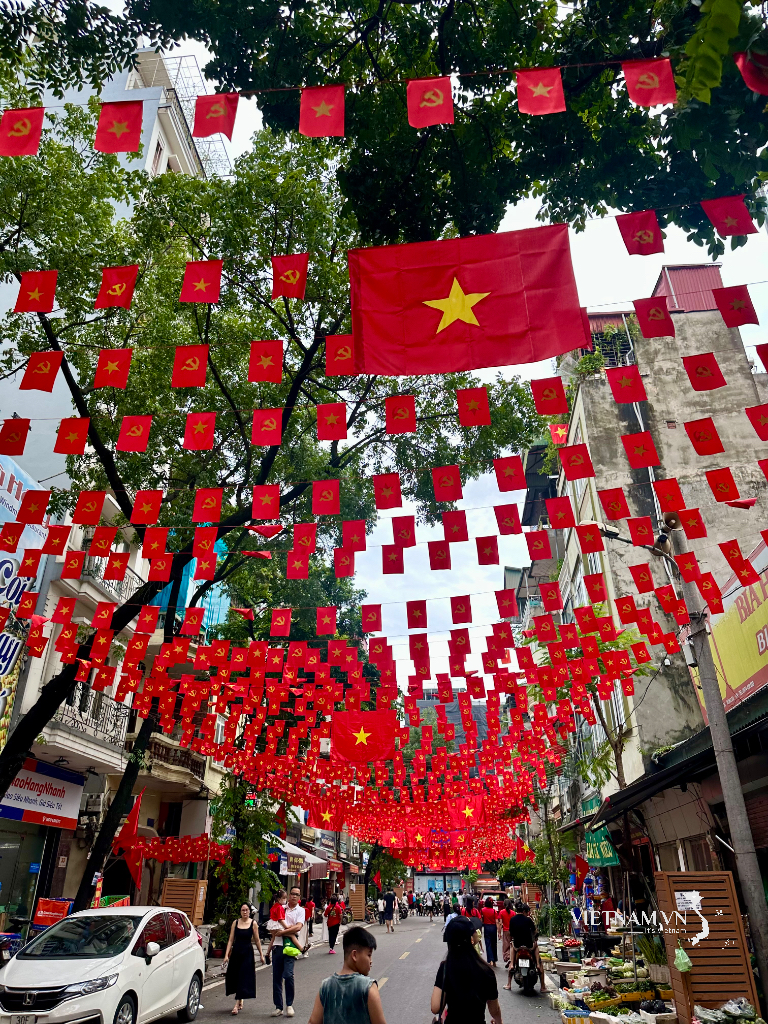
Comment (0)